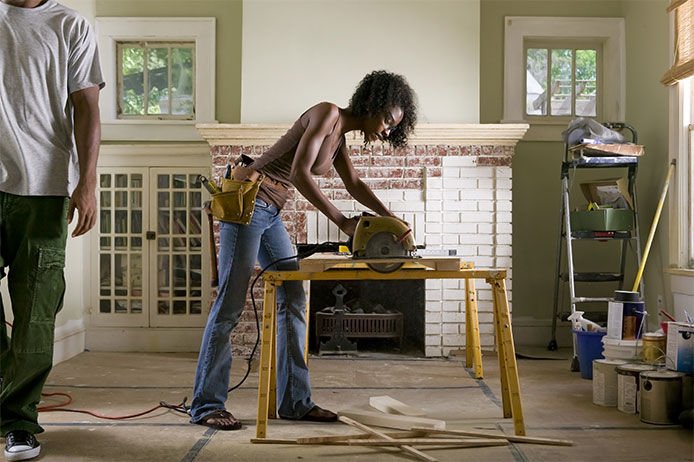
Home renovations can be exciting, but they can also be incredibly expensive if you don’t plan carefully. Whether you’re looking to update your kitchen, refresh your living space, or add curb appeal, you don’t have to spend a fortune to achieve impressive results. With smart planning, creative solutions, and a bit of DIY effort, you can transform your home while sticking to a budget. Here’s how to renovate your home without breaking the bank.
Set a Realistic Budget and Stick to It
Before picking up a paintbrush or shopping for materials, establish a clear budget. Determine how much you can afford to spend and prioritize which areas of your home need the most attention. It’s easy to get carried away once renovations begin, but sticking to a budget will keep costs under control. Consider setting aside a small emergency fund for unexpected expenses—because surprises are almost guaranteed during any renovation project.
DIY Where You Can
Labor costs can be one of the biggest expenses in home renovations, so if you’re willing to roll up your sleeves, you can save a significant amount of money. Painting walls, installing new hardware, and even laying flooring are projects that many homeowners can tackle without hiring professionals. There are countless online tutorials and workshops available to guide you through DIY tasks, so take advantage of these resources to cut costs without sacrificing quality.
Shop Smart for Materials
You don’t have to buy everything brand new. Salvage yards, discount stores, and online marketplaces often have high-quality materials at a fraction of the price. Look for gently used cabinets, fixtures, or even appliances that can be refinished or repurposed. Thrift shops and estate sales are also great places to find unique, budget-friendly pieces that can add character to your home.
Prioritize High-Impact Changes
If you’re working with a limited budget, focus on renovations that will make the biggest impact for the least amount of money. A fresh coat of paint can completely transform a room, new light fixtures can modernize a space, and updated cabinet hardware can give a kitchen a brand-new feel. Instead of replacing your entire kitchen, consider refacing your cabinets or upgrading the backsplash for an instant refresh without the hefty price tag.
Upgrade Energy Efficiency
Some renovations can actually save you money in the long run. Swapping out old windows for energy-efficient models, adding insulation, or installing a smart thermostat can lower your energy bills while improving your home’s comfort. Even small changes, like replacing incandescent bulbs with LEDs or adding weather stripping to doors and windows, can make a noticeable difference without a large upfront investment.
Know When to Hire a Professional
While DIY can save money, some projects are best left to the pros. Electrical work, plumbing, and structural changes require expertise to ensure safety and compliance with building codes. Hiring a professional for these tasks can prevent costly mistakes that could end up being more expensive to fix. Get multiple quotes, check reviews, and ask for recommendations to find reliable and affordable contractors.
Refresh Instead of Replace
You don’t always need brand-new materials to achieve a fresh look. Refinishing hardwood floors, repainting kitchen cabinets, or reglazing a bathtub can breathe new life into a space without the cost of full replacements. Even updating furniture with new upholstery or refinishing wood surfaces can make a significant impact without requiring a big budget.
Consider Affordable Outdoor Enhancements
Renovations aren’t just for the interior of your home. Simple outdoor improvements can boost curb appeal and create a more inviting space for relaxation and entertainment. Power washing your driveway, adding fresh mulch, or repainting your front door can make a world of difference. If you’ve always dreamed of having a backyard pool, consider a phased approach to pool installation in Virginia. Starting with landscaping and planning the layout in advance can help you budget for future additions without overwhelming your finances.
Plan Renovations in Phases
If your budget is tight, don’t feel pressured to complete everything at once. Prioritize projects based on necessity and tackle renovations in phases. Spreading out improvements over time allows you to save money, avoid debt, and still achieve the home transformation you envision. By planning ahead, you can take advantage of seasonal sales, clearance items, and special promotions to further cut costs.
Final Thoughts: Renovate Smarter, Not Harder
Home renovations don’t have to drain your bank account. By setting a clear budget, making smart material choices, and knowing when to DIY versus hiring professionals, you can achieve a stunning home makeover without overspending. Whether you’re updating a single room or revamping your entire home, these budget-friendly renovation tips will help you create a space that feels fresh, modern, and uniquely yours—without the financial strain. So, which renovation will you start first?